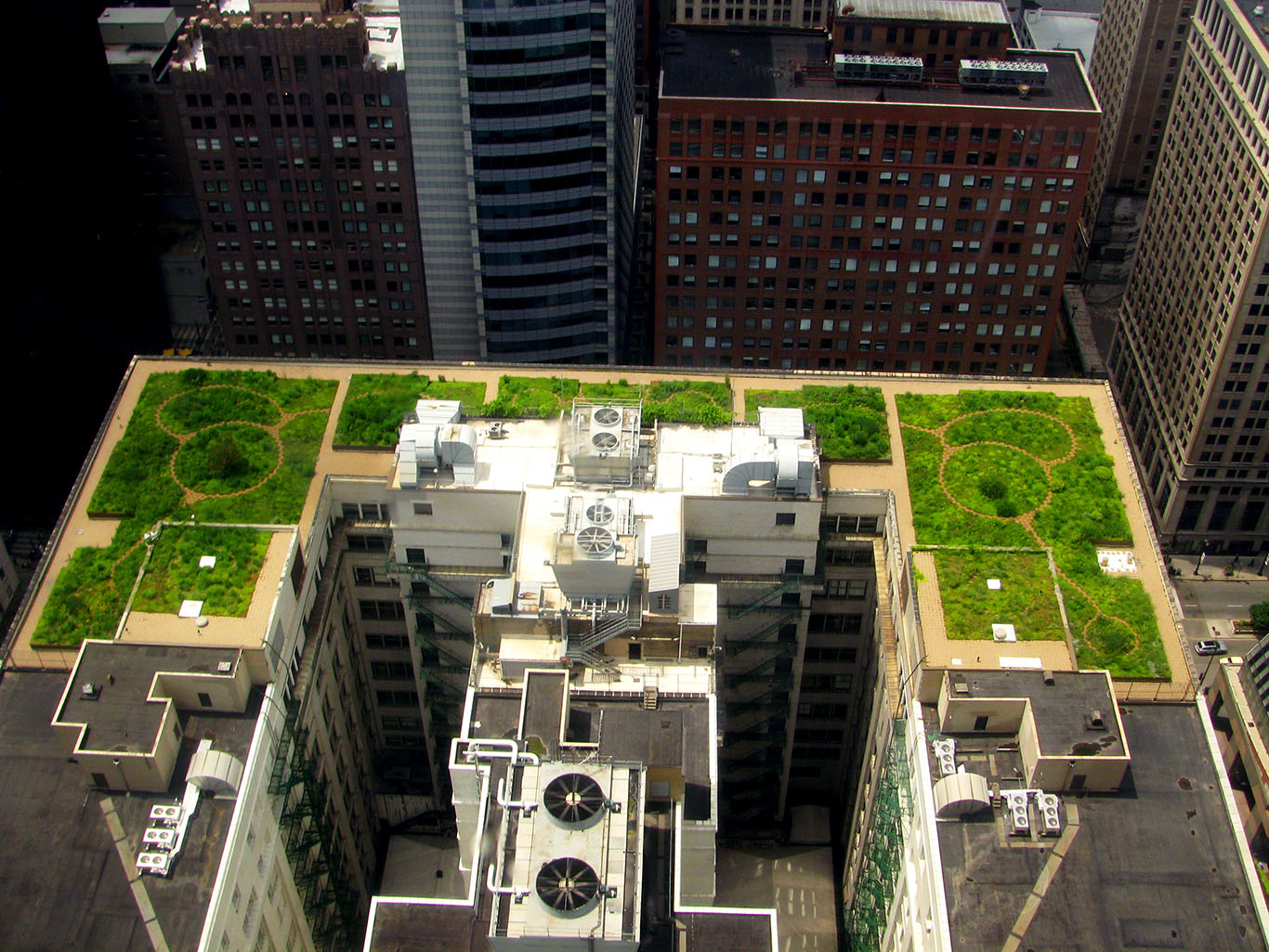How do you cut down on Heatwaves?


(©TonyTheTiger/Wikipedia)
Greening the Roofs
Since 1995 Chicago has increased the amount of green space in the city not only by planting trees but also by building green roofs. Green roofs aren't just roofs that are painted green; they are actually living gardens that are planted on top of buildings. Chicago has nearly three times the amount of green roof space than any other city in the country. Chicago's City Hall has one of the biggest and most beautiful green roofs of them all. The garden spans 23,000 square feet and has more than 100 plant species. Besides looking pretty, this green roof has a lot of other benefits. Since the green roof was put in, Chicago estimates it has saved City Hall about $3,600 a year in heating and cooling bills.
(©Conservation Design Forum/Wikipedia)


How can plants help save thousands of dollars in energy? Plants absorb sunlight and use it during photosynthesis. They don’t radiate the energy back out as heat like conventional roofs do. Plants also use the energy from the sun in a process called evapotranspiration. During evapotranspiration, some of the water that the plant has absorbed through it roots evaporates through its leaves. Since this process takes energy from outside the leaf to occur, it ends up cooling the air around the plant.
(©Diane Cook, Len Jenshel/National Geographic)

